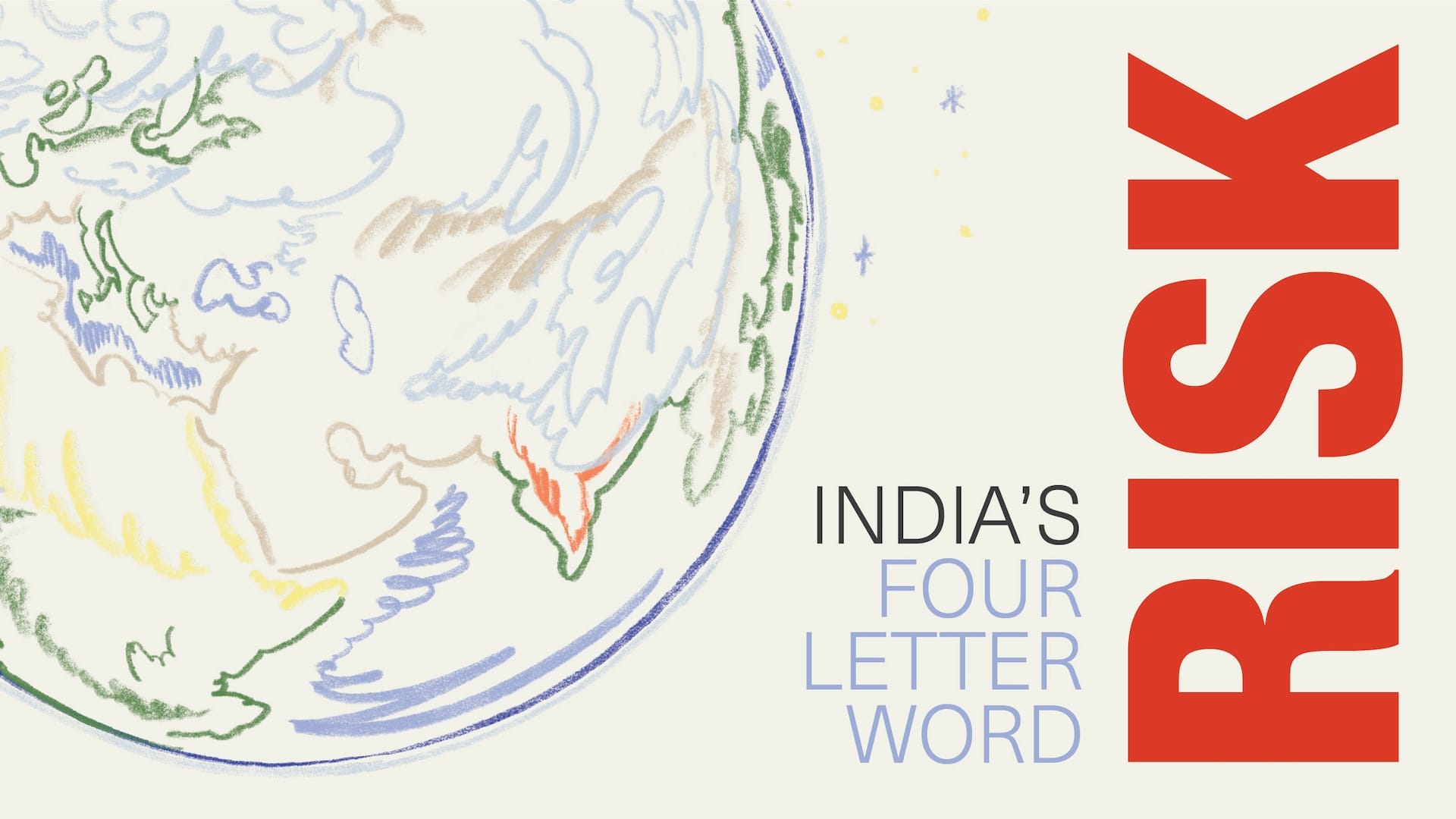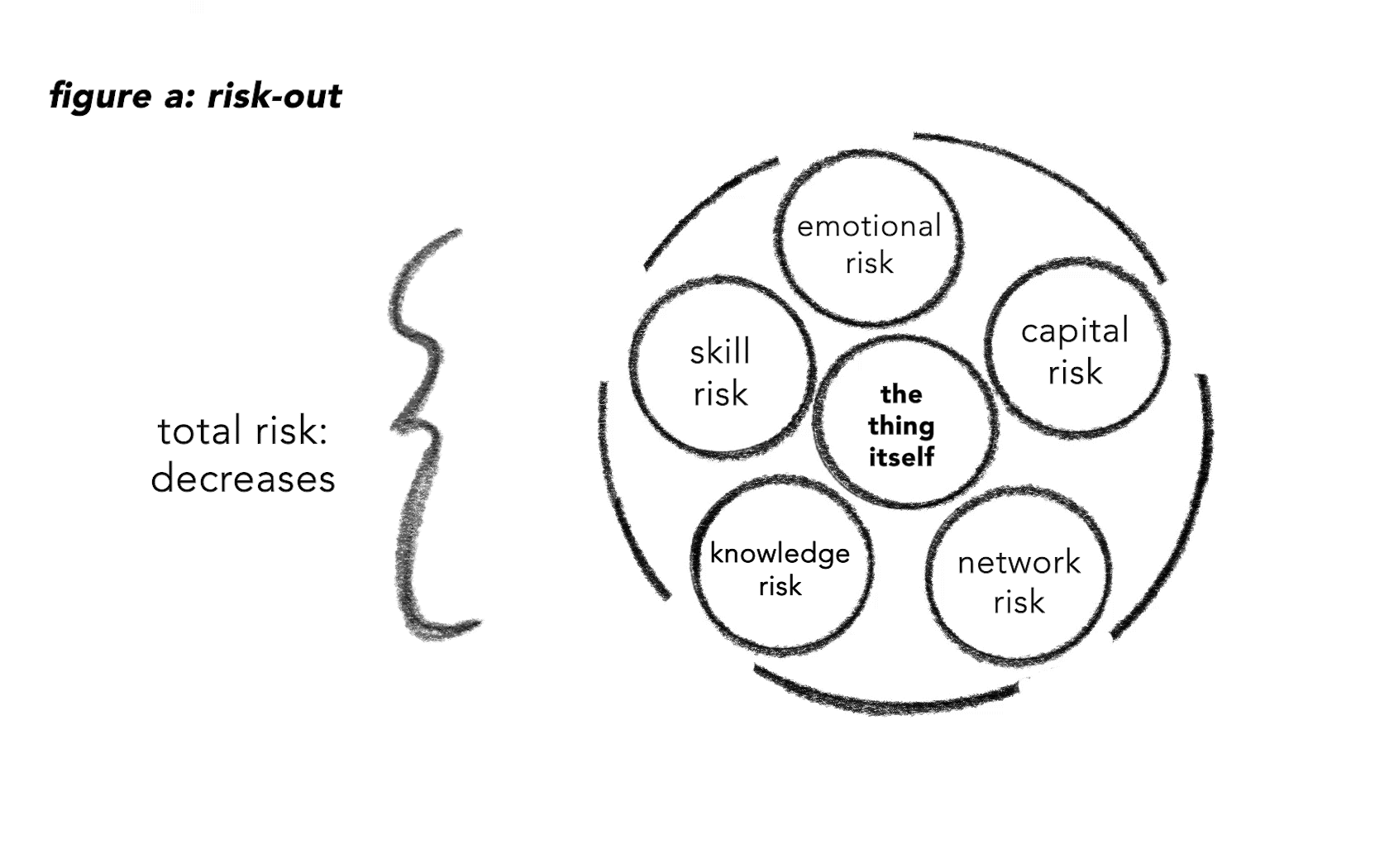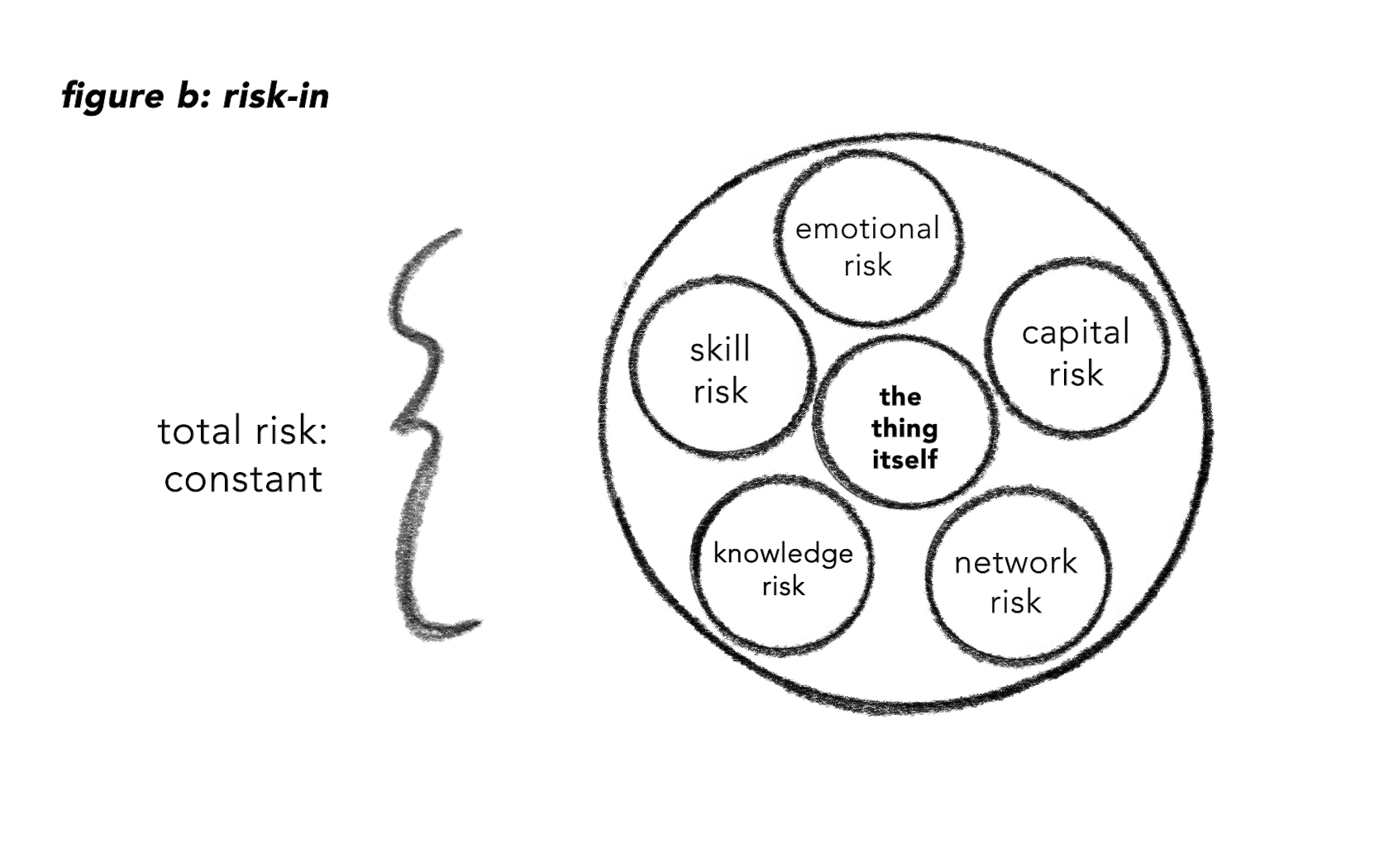India's Four Letter Word
What must change for India's startup ecosystem to reach the next level.

In India, risk is a 4-letter word.
The Indian dream is clean credentials and steady advancement. A 3BHK with hopefully staff quarters in tow. Kids headed for good schools and a club membership on the horizon. Modern nirvana.
The collective consciousness of the young urban achiever drifts toward a collection of high-recall logos on their LinkedIn. Any deviation from the well-marked path breeds fear of what you might be losing out on—if you take a road, which is proverbially not often taken.
Risk is to be mitigated or removed. A well-lived life doesn’t feature embarrassing detours.
Founding a company on an unproven idea? Risky. Switching careers at 30? Delusional. Taking a year to figure out what you want to build? Beta, are you okay?
The measuring stick of success is perfectly legible. Nicely settled, never failed.
But over the years, I have come to one conclusion which I think will be true for most people with high agency and the itch to build: not taking risks is the biggest risk you take.
Victory in Failure
Respectable credentials and a clear career ladder are perfectly reasonable things to aspire to—unless your goals are impact and high agency. Those are proportional to the risk you are willing to take. And if they matter to you, no enduring satisfaction awaits you on the well-trodden path.
To shape the world, we must accept that the most likely outcome is failure. And then we try anyway. Because we are compelled to try anyway.
If you have not visited Silicon Valley before, you should, if for no other reason than to see how small and unimpressive it is. Pleasant suburbs with a few cities that by Indian standards seem small and even sleepy! And yet it has been the beating heart of global innovation for decades. How?
A young Steve Jobs explains:
“The penalty for failure [in starting] a company in this valley is non-existent…either psychologically or economically, in the sense that if you have a good idea and you go out to start a company, even if you fail, you’re generally considered worth more to the company that you left because you gained all this valuable experience."
Cultural comfort with failure is the defining characteristic of Silicon Valley. It is what frees the talented builders and entrepreneurs who flock to this odd bastion of greatness to fool themselves into thinking that maybe they can build something great. Something that strikes down huge incumbents, generates massive amounts of value, and improves the world in a direct and tangible way. Even more than capital, this is what enables startups to aim for venture scale.
India’s current flows the other way. We’ve had the same refrains drummed into us from board exams to boardrooms: “Don’t ask too many questions. You are expected to know the answers. This is how it is done.” And a personal favorite, “Come back when you have more traction.”
We celebrate the scrappy underdog in our sports arenas and movies, but in real life, desire to disrupt is construed as hubris. What happens if someone takes a leap of faith and falls? Shaken heads, commiseration, pity cloaked as concern. Instead of asking “what if I’m right?” our most talented are trained from birth to worry, “what do I stand to lose if I’m wrong?”
We’ve programmed generations to play it safe and wonder why our brightest minds so often leave.
Disruption, by definition, means affecting the lives of thousands or millions or billions of people. Which country is better suited for that kind of scale than India? Where else is there more need for the best and brightest to leave their signature, at the end of the illegible path?
How to stop worrying and start embracing the Unknown
Bangalore does not need to become San Francisco for the Indian startup ecosystem to match Silicon Valley. But we must change our relationship to risk.
When people think about starting companies, their fears tend to cluster around five areas:
- Skill — Am I the best person to do this?
- Knowledge — Do I really understand the domain, the technology?
- Network — Do I know the right people?
- Capital — Do I have sufficient funding? What happens if I run out?
- Emotion — How will the ecosystem perceive me? What will I think of myself?
Then there’s the thing itself that these risks cluster around: your idea, your company, your ambition. Silicon Valley manages the peripheral risks in part through culture. An honest failure can still be high status. Traditional employers might disproportionately value time spent in the arena.
Silicon Valley manages those peripheral risks, and maintains its cultural comfort with failure, through institutions—like SPC.
Founders go from -1 to 0 at SPC to address the peripheral risks around what they want to build. Now you have a high talent-density network. Peers to share expertise on the skills you don’t have. Maybe capital to sustain the attempt. And lastly, a recognisable logo to put next to the attempt. You can imagine the total amount of risk decreasing.

But wait, doesn’t that sound familiar? Isn’t that just another way of following childhood programming and avoiding risk?
Risk-In vs Risk-Out
Here is the point: India must replace a risk-out mindset with a risk-in mindset.
The truth is that every country has its own version of an ideal career arc. Everyone is subject to the lure of legible advancement. Silicon Valley isn’t immune to credentialism.
SPC’s goal is not to make risk more palatable by making it smaller, but to help members take bigger bets than they otherwise would—not to burn off risk, but to redirect it into the thing itself. That is risk-in: figuring out how to decrease peripheral risks so you can increase the scale of your ambitions.

We believe the best way to adopt a risk-in mindset is to shift support earlier. If you’re stuck on an idea, it can’t respond to a changing risk profile. Accelerating a small idea will most likely leave you in a local maximum.
To put it another way: you don’t train extensively so you can hike up the first hill. You do it to climb Everest. This is why SPC exists: to help you pick the right mountain and prepare you to climb it.
____________________
The anxieties beneath India’s specific type of risk aversion are real. Bangalore is not San Francisco. A student admitted to an IIT may be the hope of an entire family for a better life. The 30 year old with a clean corporate resume worries she might never be able to get another job that pays as well if she leaves it.
But now there are other paths. Several generations of successful Indian startups have shown it’s possible to build hugely successful companies here. Those startups spin out more and more talented builders who have seen what’s possible. We have new role models.
The change in mindset from “working for a startup” to “starting my own company” is remarkable. These builders are eager to take risks and are not afraid to challenge the status quo. What they need is for systems to embrace their ambition and work to create more of them.
Imagine what becomes possible with a small shift. What if we applied our virtues to something more ambitious than comfortable success? To thrive and not just survive? What if all that annoying perfection was risk-in instead of risk-out? India’s success will be uniquely its own.
Greatness demands risk. We’re not here to make that risk go away. We’re here to make it possible to take.
And maybe we can replace ‘risk’ with ‘safe’ as India’s new 4-letter word.
